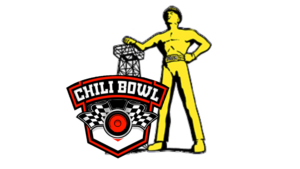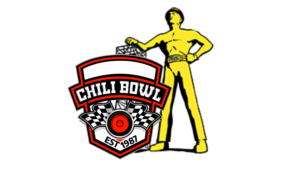The Chili Bowl Nationals, often referred to as the “Super Bowl of Midget Racing,” is one of the most anticipated and iconic events in the world of dirt track racing. Held annually in Tulsa, Oklahoma, this week-long racing extravaganza showcases the finest talents in open-wheel racing and offers an experience like no other. At the heart of this excitement is the Chili Bowl Nationals Race Format, a unique and intense competition that captivates the hearts of racing enthusiasts and spectators alike.
In this article, we’ll delve into the 2024 Chili Bowl Nationals Race Format, exploring its history, structure, and what makes it so special in the world of motorsport.
A Brief History of the Chili Bowl Nationals
The Chili Bowl Nationals was founded in 1987 by racing enthusiast Emmett Hahn and the late Lanny Edwards. Inspired by the concept of indoor dirt track racing, Hahn and Edwards aimed to create an event that would bring together the best midget and sprint car drivers from across the country. They chose Tulsa, Oklahoma, as the host city, and the inaugural Chili Bowl Nationals was held at the Tulsa Expo Center in January 1987.
Over the years, the event has grown exponentially in both size and prestige. It has become a racing pilgrimage for drivers and fans, attracting a diverse field of competitors, from NASCAR stars to local heroes, all vying for the coveted Golden Driller trophy. The Chili Bowl Nationals has consistently delivered thrilling racing and memorable moments, making it an integral part of the American racing calendar.
Race Format Overview
The Chili Bowl Nationals Race Format is designed to accommodate a large number of competitors while ensuring exciting and highly competitive racing. To achieve this, the event employs a unique structure that includes a week of racing, culminating in the crowning of the champion on the final night.
Preliminary Nights: The event typically spans five nights leading up to the main championship night. These preliminary nights feature a combination of qualifying, heat races, and features, allowing drivers to accumulate points based on their performance. These points are critical as they determine a driver’s starting position in the Saturday night A-main event, which is the pinnacle of the Chili Bowl Nationals.
Qualifying: On the first night, all competitors have an opportunity to qualify. Drivers take to the track individually and aim to post the fastest time they can over a set number of laps. This single-lap qualifying session sets the stage for the rest of the week, as it helps determine the driver’s heat race lineup and which night they will compete in during the preliminaries.
Heat Races: The heart of the Chili Bowl Nationals, heat races are high-intensity battles where drivers compete head-to-head to secure their position in the upcoming A, B, or C Main events. The number of drivers in each heat race is determined by the total number of competitors, and they often feature some of the most aggressive and exciting racing action of the week.
Main Events: The A, B, and C Mains are the highlight of the Chili Bowl Nationals. The A Main is the most prestigious race, featuring the best drivers based on their performance in the preliminary nights. The B Main is where drivers who did not earn a direct spot in the A Main get another chance to qualify, while the C Main provides another opportunity for those who missed out on the B Main.
Saturday Night A-Main: The grand finale of the Chili Bowl Nationals, the Saturday night A Main event is what everyone has been working towards. The A Main field is typically comprised of the top performers.
Heat Races
Each day, at 2 p.m., drivers select their starting positions for the heat races using a chalkboard.
The driver who draws the lowest number gets the pole position in Heat 1, the second-lowest number in Heat 2, and so on.
The number of heats depends on the number of cars present, typically with 7-10 cars per heat race, each lasting 8 laps.
Advancement from heat races to the features is determined by passing points earned in both heat races and qualifying races.
These passing points are based on a car’s starting position when the yellow light goes out before the initial start of the heat or qualifying race.
C Mains/Qualifying Races/B Mains/A Main
The top 40 drivers with the most passing points move on to four “A” Qualifying Races, while drivers ranking 41-68 in passing points participate in two C Main races, each consisting of 16 cars and lasting 12 laps.
The top four cars from each C Main race advance to the B Main races, which are 15 laps long (the top four from the first C Main advance to the back of the first B Main, and the top four from the second C Main advance to the back of the second B Main).
The lineup for each “A” Qualifying race involves an inversion of six cars, with the top 24 cars in passing points being inverted (the top point driver starts on row 3 of the first qualifying race, the No. 2 driver on row 3 of the second qualifying race, and so forth).
Each of the four qualifying races consists of 10 cars, with the top 16 in combined passing points from the heats and qualifying races progressing to the A Main.
The remaining cars (24 in total) from the “A” qualifying races move to two 16-car B Mains, each lasting 30 laps.
Each Preliminary Night A Feature comprises 24 drivers, and the top two drivers in the Preliminary A qualify for Saturday’s A Main.
Saturday Night Features
A Feature
The starting positions for the top 10 cars in the A feature are determined through the Chili Bowl Pole Dash.
The five A feature winners draw numbers 1-5, followed by the five drivers who finished second drawing numbers 6-10 to seed the Pole Dash.
POLE DASH PROCEDURE
Each Pole Dash race features four cars and is four laps in length.
Preliminary Night Winners draw for positions 1st – 5th, while runners-up draw for positions 6th – 10th.
In the first race, drivers who draw positions 7th – 10th line up in that order, with the top 2 advancing.
In the second race, the front row consists of drivers who draw positions 5th & 6th, and the two drivers who move on from the first race are placed in Row 2 (Winner inside, 2nd outside).
The third race’s front row features drivers who draw positions 3rd & 4th, with the two drivers from the second race’s winners placed in Row 2 (Winner inside, 2nd outside).
The fourth race’s front row comprises drivers who draw positions 1st & 2nd, with the two drivers from the third race’s winners placed in Row 2 (Winner inside, 2nd outside).
The winner of the fourth race earns the pole position in Saturday’s A-Feature.
Note—All positions in races other than Saturday’s A Main will line up based on the original draw of the winners prior to the Pole Dash. For example, if the Friday winner draws number 1, the Wednesday winner draws number 2, and so on, all positions in all races will be based on this draw order.
Seven drivers will advance from each B Main to the A Main, totaling 24 cars. Provisionals are reserved for the defending Chili Bowl Champion and the previous year’s Race of Champions Winner should they fail to transfer.
B Mains (20 Laps)
- There will be two B mains, each with 20 drivers.
- Drivers finishing in positions 3-8 in their Preliminary A feature qualify for the B mains.
- Five drivers from each C main advance to the B mains (1st C to 1st B, 2nd C to 2nd B).
C Mains (15 Laps)
- There will be two C Mains, each with 20 drivers.
- Drivers finishing in positions 9-14 in their Preliminary A feature qualify for the C mains.
- Five drivers from each D main advance to the C mains.
D Mains (15 Laps)
- There will be two D Mains, each with 20 drivers.
- Drivers finishing in positions 15-20 in their Preliminary A feature qualify for the D mains.
- Five drivers from each E main advance to the D mains.
E Mains (15 Laps)
- There will be two E Mains, each with 20 drivers.
- Drivers finishing in positions 21-24 in their Preliminary night A features and 5th in their B features qualify for the E mains.
- Five drivers from each F main advance to the E mains.
F Mains (15 Laps)
- There will be two F Mains, each with 20 drivers.
- Drivers finishing in positions 6-8 in their Preliminary night B features qualify for the F mains.
- Five drivers from each G main advance to the F mains.
G Mains (10 Laps)
- There will be two G Mains, each with 16 drivers.
- Drivers finishing in positions 9-10 in their Preliminary night B features qualify for the G mains.
- Five drivers from each H main advance to the G mains.
H Mains (10 Laps)
- There will be two H mains, each featuring 16 drivers.
- To qualify for the H mains, drivers who finish 11th and 12th in their Preliminary night B features will be selected.
- A total of six drivers from each I main race will move on to the H mains.
I Mains (10 Laps)
- There will be two I mains, with 16 drivers in each.
- Drivers finishing in positions 13th and 14th in their Preliminary night B features will earn a spot in the I mains.
- Six drivers will advance from each J main race to the I mains.
J Mains (10 Laps)
- There will be two J mains, each featuring 16 drivers.
- Qualification for the I mains will be granted to drivers who finish 15th and 16th in their Preliminary night B features.
- Six drivers from each K main will progress to the I mains.
K Mains (10 Laps)
- Two K mains will take place, each featuring 16 drivers.
- Drivers who finish in positions 5-6 during the Preliminary night C features will earn a spot in the K mains.
- Six drivers from each L main will progress to the L mains.
L Mains (10 Laps)
- Two L mains will be held, each with 16 drivers.
- Drivers who secure positions 7-8 in the Preliminary night C feature races will qualify for the L mains.
- Six drivers from each M main will advance to the L mains.
M Mains (10 Laps)
- Two M mains are scheduled, each with 16 drivers.
- Drivers finishing in C feature positions 9-10 will earn a place in the M mains.
- Six drivers from each N main will move on to the M mains.
N Mains (10 Laps)
- Two N mains will take place, each featuring 16 drivers.
- Drivers who finish in C feature positions 11-12 will qualify for the N mains.
- Six drivers from each O main will advance to the N mains.
O Mains (10 Laps)
- Two O mains are planned, each with 16 drivers.
- Drivers who finish in D feature positions 3-4 will qualify for the O mains.
- Six drivers from each P Main will progress to the O mains.
P&Q Mains (10 Laps)
There will be two P mains and potentially two Q mains, with the number of drivers to be determined.
Drivers finishing in D feature positions from 4 and beyond will be eligible for these races, with starting positions determined by their performance on the qualifying night and the number of cars involved.






